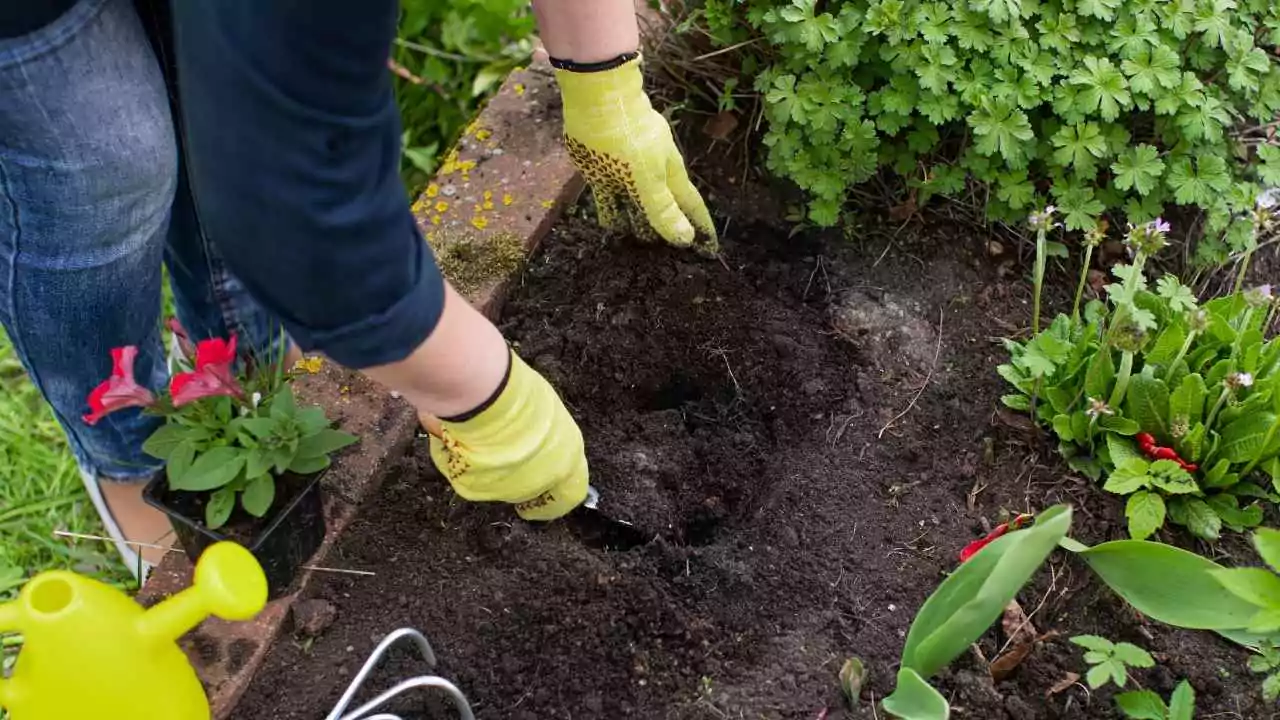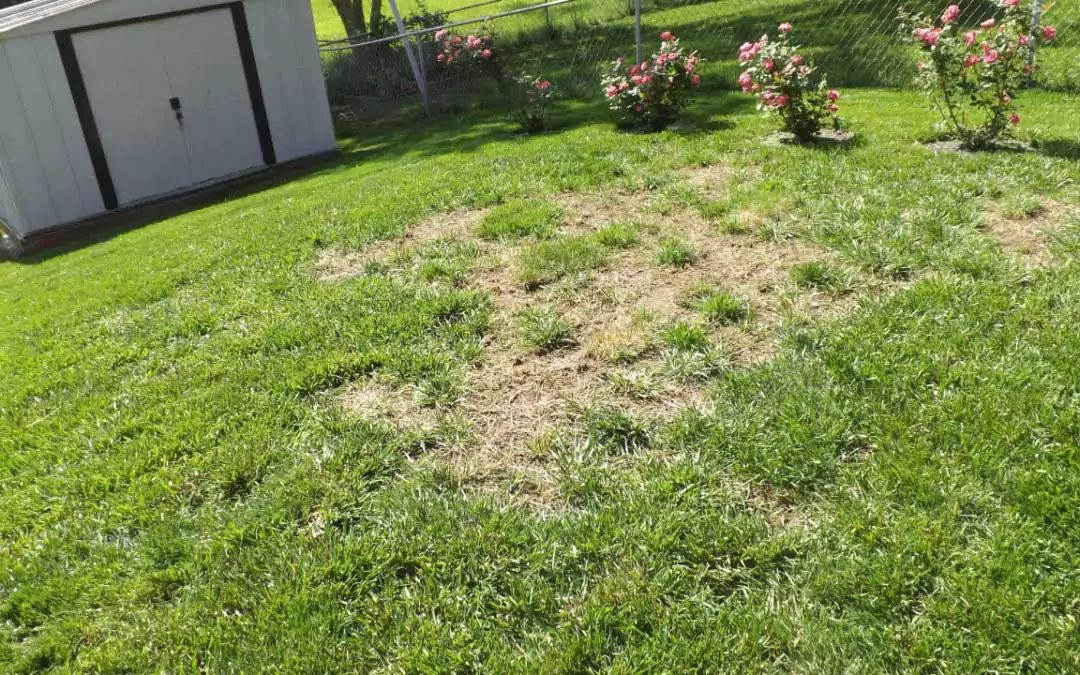Are all soils the same?
If they were, you could put any soil on your grass, and it would grow, but the grass has its preference.
Which is better for grass, topsoil or garden soil?
Topsoil is better for grass because it doesn’t have added nutrients or drainage substrates that could inhibit grass growth. Topsoil is also better for your wallet, so why pay for something that won’t work as well?
Garden Soil

“Garden soil” is the name used for pre-mixed soils. As the name indicates, garden soil is good for gardens.
Flowers, fruits, vegetables, and herbs need extra nutrients, so they can grow fuller and stronger and produce fuller, brighter flowers and fruits.
The added nutrients are from blended materials; peat, perlite, and organic matter are added to topsoil.
Bagged garden soil is generally more expensive than bagged topsoil and is not a “one size fits all” for plants.
Each plant has its own requirements for water retention nutrients.
This means that, in addition to spending more money per bag, you will have to purchase different specialty mixes for each type of plant.
What Can You Use Garden Soil for?
Even though garden soil is not great for grass, garden soil can do beautiful things for gardens. That does not just mean garden beds.
Garden soil can be used in:
- Hanging baskets
- Potted plants
- Raised planters
- Window boxes
Topsoil

Topsoil is the closest thing to “dirt” you can get.
Topsoil is the uppermost 12 inches of soil on your lawn.
Landscapers are much more specific when using the term topsoil. For landscapers, topsoil is the uppermost 12 inches of soil that has been removed from the ground and screened to remove rocks, roots, twigs, or bugs, etc.
Top soil is appropriate for grass lawns.
There are no nutrients and no drainage materials in the soil so grass grows well right into this soil. Grass and topsoil will have nutrients from bugs, grass, leaves, and weeds breaking down naturally in the soil.
The Right Topsoil
| Soil | Pros | Cons |
|---|---|---|
| Clay | Retains moisture and nutrients. | Compacts easily resulting in drainage problems, no space for roots, suffocating plant roots, and is difficult to work with. |
| Sand | Plenty of space for root growth. Easy to work with. | Loses water and nutrients quickly and needs to be watered and fertilized more often. |
| Silt | Easy to work with. Holds water and nutrients. | Poor drainage and is easily eroded by wind and rain. |
Topsoil vs Garden Soil
A balanced soil composition is:
- 15% clay
- 35% silt
- 50% sand
This composition provides good water retention, stability, and insulation for the root system.
Having a little too much clay in your top soil is quite common. Clay will compact and will not give the grass roots space to grow, and also reduce drainage.
On the opposite end is too much sand which will let drainage happen too quickly and leave nutrients suspended in the water.
Silty soil has very similar attributes to clay and sandy soil. The particles are small and easy to work with, but water is easily compacted to cause drainage problems.
When overly dry, silt can be blown or washed away, even with a small breeze or light rain.
Topsoil vs. Garden Soil – Which One Is Right For Me?
Topsoil is rated for the extent it has been processed and graded according to special organic material used. It may be screened or unscreened, and it may consist of more sand or clay.
Unscreened topsoil has small rocks, sticks, wood chips, or other organic solids. It does not include inorganic fertilizers. Topsoil is sold in bulk by the cubic yard and cubic foot and its cost varies from $2 to $5 for a 40-pound bag.
Garden soil is a mixture of screened topsoil processed in a manner making it uniform particle sizes and consistencies with nutrients immediately available to plants.
The color, particle size and consistencies vary according to the source but the final product is a consistent mix that is ready to use right out of the bag which is crumbles to the touch mostly free of solid material.
Garden soil may be labeled as organic or contain inorganic fertilizer, but it is not rated by quality or type. It can be bought by the cubic yard, and is readily available at garden centers as packaged bags ranging from $2.50 to $5-$15 per cubic foot.
| Topsoil | Garden Soil |
| Graded by type | Ungraded |
| No inorganic fertilizer | May include inorganic fertilizer |
| Includes organic material | Includes organic material |
| Clay, silt and sand percentages vary | Loam |
| Screened or unscreened | Screened |
| Particle size varies | Uniform particle size |
| Holds moisture | Well-draining |
| $2 to $5 per cubic foot | $2.50 to $15 per cubic foot |
When to Use Topsoil vs. Garden Soil?
Good quality garden soil is the most expensive of the two types of soil, although some specialized topsoil, like mushroom compost can be pricey.
Standard topsoil mixtures are evaluated for standard landscaping products like planting lawns, trees and shrubs and flower gardens. Topsoil is a good filler for filling holes and leveling a slightly uneven lawn; it can also be added to an area where topsoil is not sufficient to support plant growth.
If you are constructing a raised garden bed or growing a container garden topsoil can be used as an underground layer and garden soil on top. Topsoil is best to make bulk garden projects that may require you to get cubic yards of soil, economical and practical.
Garden soil can be added to established perennial flower and vegetable gardens to replace nutrients that plants have depleted. It is a good option for a top layer in raised beds or container gardens. It is already processed to drain easily and contains nutrients that are immediately available to plants.
How To Fix Grass?

If you weren’t already convinced about using topsoil for your grass, it is also sold cheaply in bulk so you can do a large lawn level with it and keep the rest for when you need it to fix a few areas.
Fixing Grass? What could that even mean?
Have you ever noticed that there are sodden areas of grass? Or maybe there are some areas that just will not grow grass, no matter what you do?
With all that being said, you are fixing your lawn (which includes fixing your soil) by doing the following:
- Take your spade and cut around the outer edge/periphery of the area needing fixed. Then slide your spade underneath the grass to separate the grass from the soil beneath. You will have a piece that should resemble sod.
- Carefully lift this piece and move it aside. If it is too heavy to lift, then simply cut it up into smaller pieces and place it aside.
- Next, dump some topsoil in the area with the existing soil underneath. Give it a good mixing up to incorporate everything. If you are repairing an area where the grass has sunk down, pour in topsoil until you have a mound that is a few inches over the area level of the grass.
- Jump up and down on the soil to pack it back down to shape. If the area still needs more soil to level it, just repeat the steps until you are satisfied.
- After you level the soil area, replace your sod pieces back on top, and make sure to give the area a good soaking.
Verdict
When it comes to grass, topsoil is the number one option.
There is nothing added to topsoil that would stop grass from growing, while also adding nutrients that will benefit grass growth.
Topsoil is your number one option whether you are levelling out your entire lawn (while ensuring it slopes down away from your house), or even just to fill in a couple holes in your lawn.